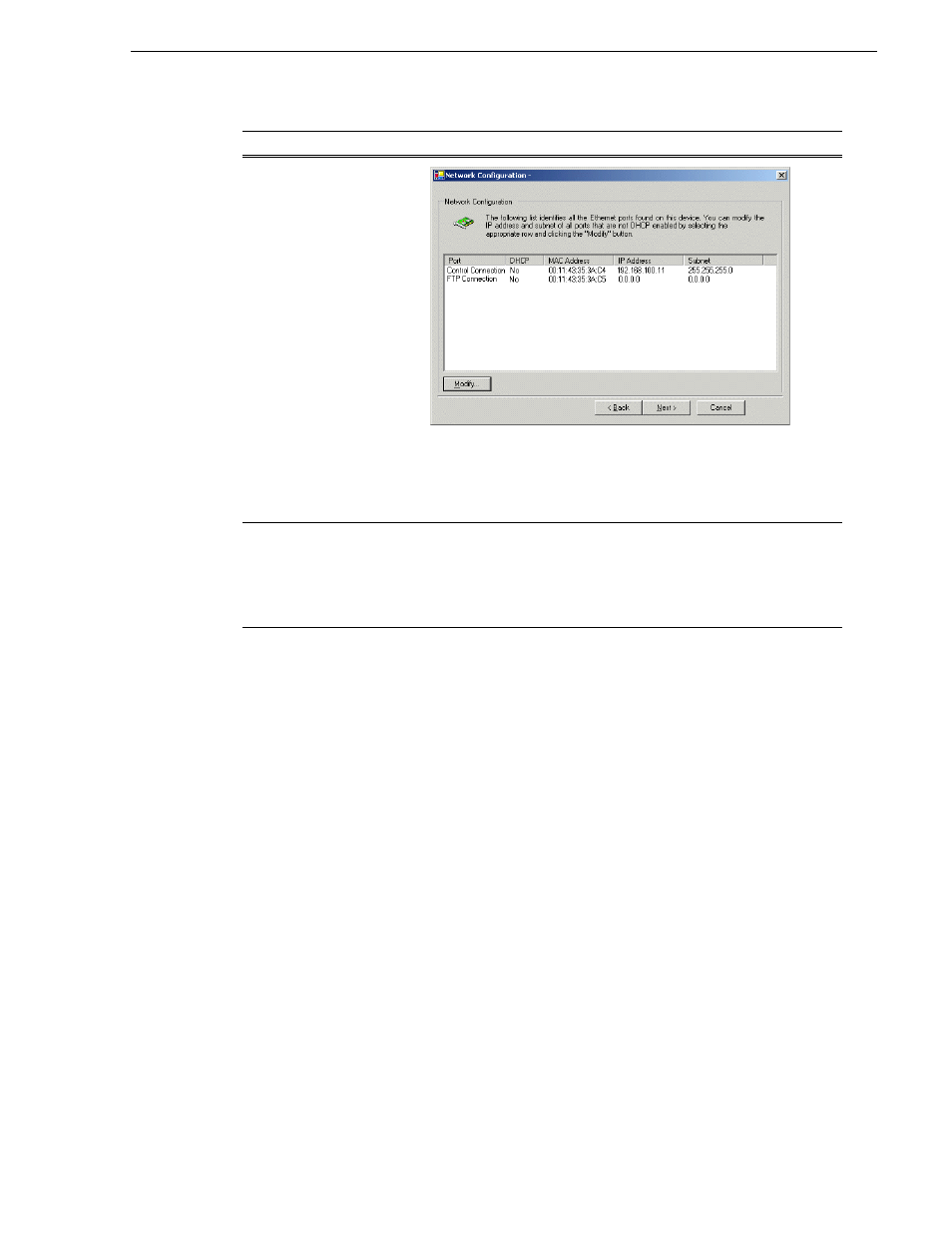Configuring raid, Configuring raid network and snmp settings – Grass Valley K2 Summit Storage Area Network v.7.1 User Manual
Page 300

26 October 2009
K2 Storage Area Network Installation and Service Manual
300
Configuring RAID
3. Continue with the next procedure to use Storage Utility to configure the storage and
file system.
Leave the Configure K2 Server wizard open while you are using Storage Utility.
When you are done with Storage Utility, you continue with the wizard.
Configuring RAID
Use Storage Utility to complete the configuration of the L30R RAID chassis, as
explained in the following topics:
•
“Configuring RAID network and SNMP settings”
•
“Binding disk modules”
Refer to
“Prerequisites for initial configuration” on page 295
to confirm that the
RAID storage is ready for configuration.
Configuring RAID network and SNMP settings
Use the Storage Utility to configure the following settings for the Level 35R RAID
controllers:
• IP address
• Subnet mask
• Gateway Address
Network Configuration
This page displays the
control network Ethernet
port, and allows you to
configure the FTP/
Streaming network Ethernet
port.
For Level 35R, this server
does not take the role of FTP
server, so configuring the
second port here for the FTP/
streaming network is not
required.
The top port is the port over which the K2 System Configuration
application is communicating. If correctly configured, it is already
assigned the control network IP address, as displayed on this page.
Click
Next
.
File System Server
Configuration
Enter the name or IP address of the redundant K2 Media Server (server
1B).
Do not yet click Next. Do not yet enter anything in the File System
Server #2 box.
Click
Launch Storage Manager
. Storage Utility opens.
On this page…
Do this…